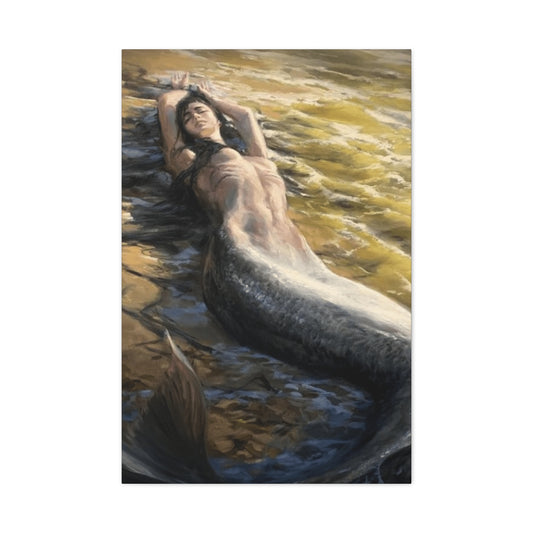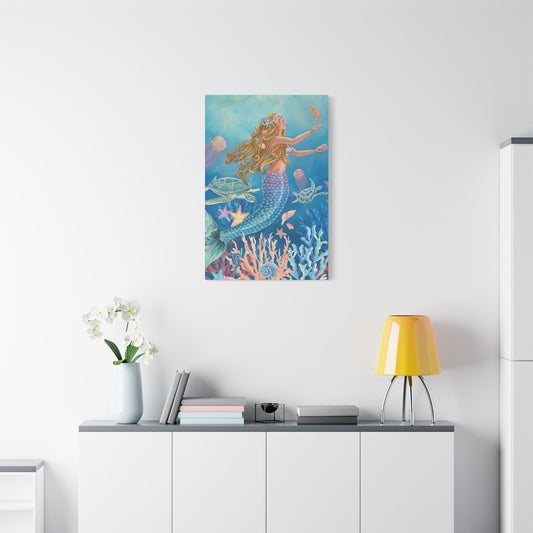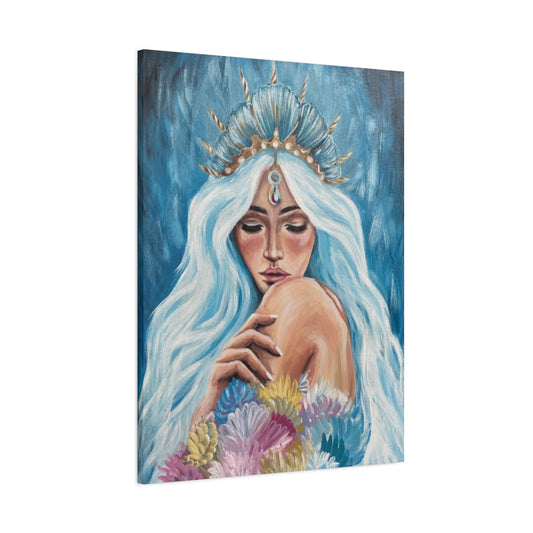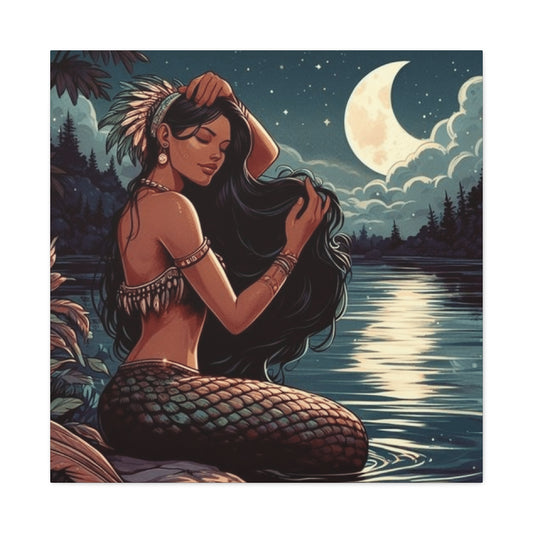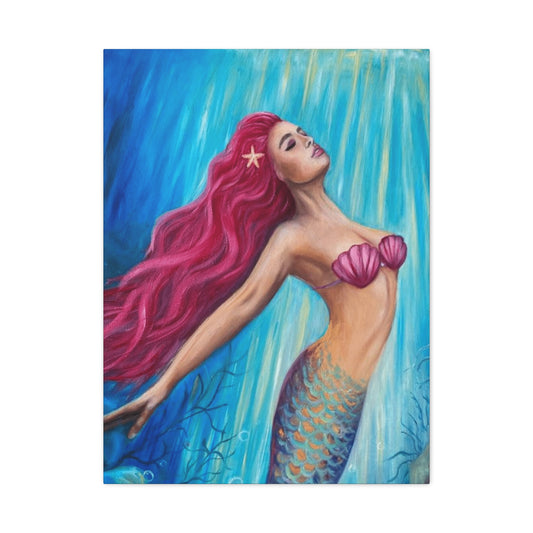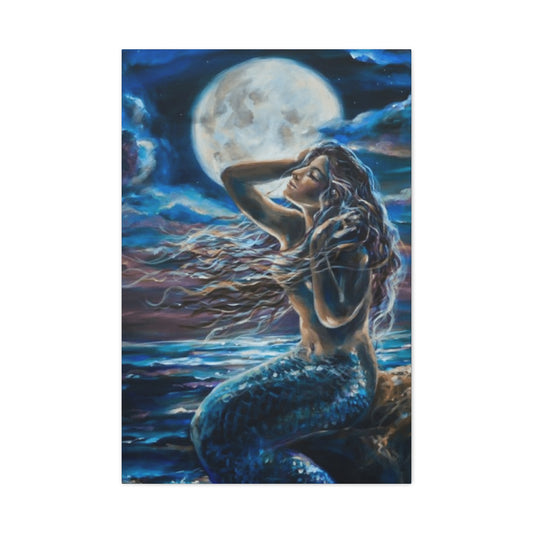Composite photography stands at the intersection of art and imagination, offering visual creators the power to merge reality with fantasy. This advanced technique involves combining multiple photographic elements into a single image, allowing for surreal, dramatic, or hyper-realistic scenes that are nearly impossible to capture in one shot.
In today’s digital world, this skill is indispensable in genres such as fine art photography, advertising, digital manipulation, concept photography, and even cinematic poster design. Learning how to craft composite images in Photoshop gives you full control over your composition, lighting, color grading, and story—all from your desktop.
This detailed guide will explore what composite photography is, why it matters, the ethical concerns surrounding it, how to plan and source your assets, and walk you through a hands-on Photoshop tutorial to create your own compelling visual masterpiece.
|
Related Catagories: |
Understanding Composite Photography: The Power of Image Fusion
Composite photography is the art and science of combining multiple photographic elements into a single cohesive image. It enables photographers, artists, and designers to transcend the limitations of conventional photography, creating scenes that go far beyond what can be captured in a single frame. In essence, a composite image is a seamless amalgamation of visuals drawn from two or more photographs, carefully integrated to produce a believable or fantastical result.
Unlike simple overlays or double exposures, true composite images are intricately built using advanced post-processing techniques. Every element within a composite is selected, masked, transformed, and adjusted to match the context of the larger scene. Whether it’s a surreal dreamscape, a hyper-realistic environment, or a stylized conceptual image, composite photography allows for complete creative control.
This visual technique is particularly valuable when the subject matter is logistically impossible, dangerous, or prohibitively expensive to capture. For example, imagine a person levitating above a desert while books float around them—rather than relying on elaborate sets or green screens, this can be created digitally by layering and integrating individual images that are lit, angled, and colored to work harmoniously.
More than just a post-production trick, composite photography is a narrative device. It offers a unique platform to convey emotions, build alternate realities, and emphasize ideas that can’t be easily expressed through a single photo. Its appeal lies in its ability to not just document reality, but redefine it—crafting visuals that challenge perception and engage the viewer on a deeper conceptual level.
The most impactful composites often come across as invisible; the average viewer might not even realize multiple images have been used. This illusion relies on technical precision. Key components such as light direction, shadow behavior, resolution consistency, and depth of field all need to be meticulously aligned. A subject photographed with soft, ambient indoor lighting won't convincingly blend into a sun-drenched beach scene unless the lighting is carefully matched and shadows are added or modified accordingly.
Perspective also plays a vital role. If the subject was shot from a low angle but the background image features a bird's-eye view, the mismatch will disrupt the realism. Achieving a natural look means syncing the vanishing points and maintaining consistent focal lengths between all assets.
In commercial photography and advertising, composite techniques are invaluable. Fashion editors can place models in exotic locations without ever leaving the studio. Product photographers can stage complicated setups digitally, reducing production time and cost. In entertainment and movie posters, composite images allow for dynamic visual storytelling by layering elements from different shoots, environments, and concepts into one unified artwork.
Beyond its commercial use, composite photography thrives in fine art. Artists can create fantastical scenes that blend reality and imagination, inviting viewers to explore deeper meanings. Whether it's a metaphorical visual allegory or a whimsical fantasy, composites offer unlimited potential for artistic expression. It’s here where the method becomes more than just image editing—it becomes a tool of visual philosophy.
That said, the ethics of composite photography should always be considered, especially in contexts where image authenticity is critical. Editorial photography, photojournalism, and scientific imagery require fidelity to reality. In those domains, manipulating the scene can lead to misinformation and breach of trust. In such cases, transparency is not only encouraged but often mandatory. Disclosing that an image is a composite is essential when it may influence the interpretation of facts or reality.
Creating a convincing composite image demands more than just combining attractive visuals. It starts with ideation—a concept or vision that serves as the blueprint for everything that follows. From there, suitable imagery must be sourced or photographed with compositing in mind. Elements like camera angle, focal length, and lighting style should match or be close enough to allow for seamless integration later.
Once in Photoshop or a similar editing platform, the real magic begins. The subject is typically cut out using tools like the pen tool, object selection, or channel masking. The background is cleaned and prepared to receive the new elements. Color grading is applied to synchronize tones, often using selective adjustments like curves, color balance, hue/saturation, and gradient maps.
Layer masks allow for non-destructive blending, helping you refine edges and transitions. Shadow casting, highlight enhancement, and even environmental reflections are crafted by hand to bring realism to the surreal. Atmospheric effects such as fog, light leaks, mist, and grain are added to unify the overall aesthetic. These micro-adjustments give the composite depth, anchoring disparate parts into a single visual narrative.
The beauty of composite photography lies in its diversity. Some artists aim for hyper-realism, where the end result mimics untouched photography, while others lean into fantasy and surrealism, embracing the implausible with confidence. Each style has its own challenges—realistic composites require attention to scientific accuracy, while surreal composites demand originality and creative cohesion.
Advancements in artificial intelligence and machine learning have further enhanced composite capabilities. Tools powered by AI can now automatically match lighting, suggest sky replacements, and generate masks with near-perfect precision. Still, the creative decisions remain in the hands of the artist. Knowing how to choose the right assets, what story to tell, and how to balance elements visually is a skill that no algorithm can replicate.
Practicing composite photography sharpens a wide range of skills—from technical expertise in editing software to artistic sensibility in composition and storytelling. It invites you to look at images not just for what they are, but for what they could become. With time, you begin to see everyday scenes as potential ingredients for something larger, more imaginative, and more expressive.
As a tool for digital storytelling, composite photography offers unlimited creative freedom. Whether your goal is to produce striking visuals for a marketing campaign, bring a fantasy concept to life, or experiment with visual metaphors, this art form provides the structure and flexibility to bring any vision to life.
The Emotional and Conceptual Power Behind Image Blending
Composite photography is not just about visual aesthetics—it’s a form of communication. The way images are layered, blended, and enhanced tells a story, evokes a feeling, and captures attention in ways traditional photography sometimes cannot. A well-executed composite image doesn’t just show a scene; it invites the viewer into a new dimension, encourages them to question what they’re seeing, and interpret the image on an emotional or intellectual level.
Through subtle cues like atmospheric lighting, symbolic props, or exaggerated scale, composite artists can craft metaphors and narratives that resonate. A lone figure standing in a vast, foggy landscape might convey isolation or introspection. An urban street bursting into flower blooms could represent resilience or transformation. The possibilities are infinite, and so is the impact.
The effectiveness of a composite lies not only in its realism but in its ability to convey meaning. That’s why conceptual depth is just as important as technical execution. While mastering tools like layer masks and adjustment layers is vital, the ultimate goal is always to communicate something that sticks with the viewer—whether it’s awe, wonder, curiosity, or reflection.
Composite photography bridges the gap between imagination and execution. It enables you to conjure the unseen, express the intangible, and capture the essence of your vision in visual form. When done thoughtfully, it not only amazes—it connects.
Composite Photography: The Digital Collage Revolution with Limitless Creative Potential
Composite photography is more than just an evolution of photo editing—it’s an artistic renaissance born in the digital realm. Often described as a digital collage, this technique surpasses the limitations of traditional media by enabling artists to manipulate and sculpt images with pixel-perfect precision. This fusion of visual elements from multiple sources isn’t just about layering—it’s about storytelling, imagination, and crafting a world that straddles the line between reality and the surreal.
In traditional collage work, artists are constrained by the physical properties of paper, glue, scissors, and pre-printed materials. In contrast, composite photography opens up a kaleidoscopic range of possibilities by letting you bend the rules of physics, perspective, and even time. With tools like Photoshop, creators can control every variable—lighting angles, atmospheric effects, object scale, depth of field, and color grading—down to the most granular detail. The result is not simply an image, but a visual narrative meticulously constructed with intention and finesse.
Composite work allows artists to transcend the ordinary and dive into a realm where fantasy blends seamlessly with realism. Unlike simple overlays or filters, this discipline requires an astute balance of technical prowess and conceptual vision. Each element must be thoughtfully integrated so that the final product either tricks the eye into believing it's real or boldly celebrates its artificiality through artistic abstraction.
Whether you're building a whimsical dreamscape, crafting an impossible cityscape, or merging time periods in a single frame, composite photography equips you with the tools to turn abstract ideas into vivid visual form. This creative freedom makes it especially popular among fine art photographers, surrealist artists, commercial designers, and digital content creators who seek to produce compelling, emotionally resonant imagery.
The Craft of Composite Photography: From Imagination to Execution
Creating an effective composite is not merely a technical endeavor; it is a process rooted in pre-visualization and layered construction. The journey often begins with a central concept or visual theme. Artists meticulously gather elements from various photographs—sometimes from their own library, sometimes from curated stock resources. These source materials may include landscapes, portraits, textures, architecture, celestial elements, or even microscopic imagery.
The key challenge lies in making disparate components coalesce into a single, harmonious frame. This involves meticulous adjustment of scale, careful masking to eliminate backgrounds, feathering edges for seamless transitions, and ensuring cohesive light sources across all elements. Color grading becomes an indispensable tool—used to unify tones, adjust warmth or coolness, and ensure mood consistency. Tools such as layer blending modes, selective shadows, and luminosity masks are essential for achieving realism and depth.
The versatility of composite photography means it can be used to create anything from a hyper-realistic scene where viewers can't discern the manipulation, to an imaginative tableau where the artificiality becomes its strongest charm. Each composite has the potential to evoke awe, provoke thought, or inspire curiosity. This makes it an ideal medium for conceptual storytelling, brand advertising, album artwork, editorial illustrations, and fine art gallery pieces.
A truly successful composite doesn’t look edited—it looks intentional. This intentionality is what separates composite work from casual photo edits. Every pixel serves a purpose. Every shadow casts meaning. Even when venturing into surreal or fantastical territory, the illusion must feel internally consistent. The eye might recognize the scene as impossible, but it should still believe that it could exist within its own logic.
Lighting is one of the most critical aspects of this illusion. Inconsistent light direction can shatter the illusion instantly. To maintain believability, artists often recreate artificial lighting within the software to mimic real-world light sources. Highlights, shadows, and reflections are added or subtracted with purpose, often enhanced with dodging and burning techniques. Atmospheric elements—like fog, mist, lens flare, or light leaks—can be added subtly to tie the scene together and imbue it with atmosphere.
Textures also play a pivotal role in composite work. Surface qualities like rust, fabric grain, skin pores, or cracked paint can be overlaid to add tactile richness. These subtle visual cues help blend real and digital seamlessly, fooling the viewer’s senses and deepening the immersive experience. They give the composite authenticity, even when the subject matter is entirely fabricated.
Moreover, composite photography is not bound by a specific visual style. Artists can pursue a painterly aesthetic with brush-style blending and desaturation, or go for ultra-sharp realism with crisp focus and vibrant colors. They can create dystopian cyberpunk worlds or serene pastoral landscapes—each unique, each impossible to achieve through traditional photography alone.
What makes this art form especially dynamic is its potential for reinterpretation. A composite file is never truly “finished”; it’s a living canvas. Artists can return to their work weeks or months later, rearranging elements, altering hues, or replacing entire components to tell new stories or adapt to different audiences. This fluidity is emblematic of the medium itself—limitless, adaptive, and constantly evolving.
In today’s visually saturated culture, where billions of images compete for attention, composite photography offers a way to stand out by creating what doesn’t yet exist. This makes it particularly valuable in advertising, entertainment, and digital storytelling. The ability to bring imagined worlds to life offers brands and artists a platform to push boundaries and expand the lexicon of visual communication.
Social media has also catalyzed the popularity of composite work, with platforms like Instagram and Behance serving as modern galleries for digital creators. Here, artists can showcase time-lapse process videos, behind-the-scenes layers, and before/after comparisons, further highlighting the craftsmanship behind each image. This transparency not only educates audiences but also fosters a deeper appreciation for the discipline.
|
Related Catagories: |
Composite photography is also a natural ally to other visual arts such as 3D modeling, digital painting, and motion graphics. Integrating CGI elements into photographic composites opens up new dimensions, allowing artists to blend hand-drawn or digitally rendered characters with real-world environments. This synthesis can give birth to truly original aesthetics, where the boundary between digital media and fine art becomes beautifully blurred.
As artificial intelligence tools and machine learning algorithms become more integrated into digital workflows, the possibilities for composite work will expand even further. Automated object selection, AI-based upscaling, and generative image tools are already making it faster and more intuitive to create complex composites. However, despite the rise of automation, the core of composite artistry remains human. It is still imagination, intuition, and narrative sensibility that drive the creation of truly unforgettable visuals.
Composite Photography: The Digital Collage Revolution with Limitless Creative Potential
Composite photography is more than a refinement of photo editing—it represents a complete metamorphosis of visual storytelling in the digital age. Often likened to a digital collage, this medium transcends traditional art by empowering creators to craft intricate imagery with extraordinary control. Unlike conventional collage, where artists are limited by physical media like paper, scissors, and adhesive, digital composites operate at the level of individual pixels, allowing for seamless blending, surreal juxtapositions, and entirely new realms of expression.
This medium blurs the boundaries between photography and imagination. By amalgamating multiple photographs into a single visual plane, composite photography invites artists to reconfigure reality. They manipulate scale, synchronize shadows, reimagine lighting directions, and fine-tune textures to produce results that range from strikingly realistic to dreamlike or even otherworldly. Each creation is not merely an image but a carefully woven tapestry of visual elements that conveys meaning, mood, and motion—even when completely static.
What elevates composite photography is its potential for both precision and creative liberation. Tools like Photoshop, Lightroom, and advanced masking software give creators the ability to simulate physical effects such as lens distortion, bokeh, atmosphere, and depth. Adjustments to hue, saturation, contrast, and shadow are not just enhancements—they’re decisions that contribute to a cohesive visual language. Every detail is curated to evoke emotion or challenge perception.
More than a digital trick or aesthetic flourish, composite photography is a means to stretch the boundaries of what is visually possible. It is as much about technical acumen as it is about creative intuition. Whether one is constructing an apocalyptic skyline, fabricating a floating island, or blending time periods into one seamless shot, composite work allows for a synthesis of imagination and expertise that few other mediums can rival.
This artistic approach has gained traction among fine art photographers, conceptual artists, commercial designers, and content creators seeking more impactful, evocative storytelling. By manipulating reality through calculated exaggeration or visual metaphor, they produce imagery that resonates deeply. The possibilities are not only infinite—they are continually evolving with the tools and trends of the digital world.
The Craft of Composite Photography: From Imagination to Execution
The composite photography process is meticulous, rooted in both visual theory and practical dexterity. It usually begins with a concept or abstract inspiration. Artists then curate a suite of visual assets—landscapes, portraits, skies, textures, and more. These assets may be original captures, digitally rendered elements, or high-resolution stock. Once imported into a workspace, the real artistry begins.
Every composite image must maintain cohesion in perspective, scale, and lighting. It’s not enough to paste images together; the fusion must feel plausible within its own constructed reality. Scale must match horizon lines. Shadows must align with consistent light sources. Objects must occupy logical spatial relationships. When even one of these fundamentals is off, the entire image loses its authenticity.
Layer masks are crucial tools in this process. They allow the artist to selectively reveal or hide parts of each layer, blending disparate elements into a seamless whole. Sophisticated use of brushwork enables feathering, erosion, and refinement of edges. The result: transitions so smooth that the viewer no longer perceives them as separate parts.
Lighting direction is among the most challenging—and important—aspects. When the shadows of one element contradict the highlights of another, the illusion breaks. To avoid this, digital artists often replicate artificial light sources within the image itself, applying shadows and highlights manually to simulate interaction between objects. These enhancements are made more lifelike through techniques like dodging, burning, and gradient mapping.
Color harmony also plays a pivotal role. Even when the composite consists of elements from different sources, the final output must be chromatically unified. Artists achieve this through selective color grading, global toning, and balancing hues across the image. Whether creating a dusky amber mood, a cool futuristic blue ambiance, or a verdant fairytale palette, the color story helps ground the viewer emotionally.
Textures contribute another layer of realism and intrigue. Adding subtle grains, weathering effects, organic imperfections, or light flares introduces tactile qualities that give digital work a visceral feel. These nuances, while often unnoticed on first glance, significantly enrich the final image. Viewers may not consciously identify a specific overlay, but they feel its presence, enhancing the overall immersion.
What’s truly extraordinary about composite photography is its stylistic fluidity. Artists can pivot between genres—photojournalism, sci-fi fantasy, neo-noir, minimalist abstraction—with ease. The visual language of composites adapts itself to any narrative. Some pursue hyperrealism with such finesse that the viewer cannot distinguish the fiction. Others lean into the fantastical, where giant birds, levitating humans, or melting architecture create metaphor-rich environments.
Unlike conventional photographs, composites are living documents. They can be reopened, modified, and repurposed long after their initial completion. An artist might reimagine a composition by changing its color scheme, replacing a background, or adding new symbolism. This iterative quality mirrors the evolving nature of both digital tools and creative vision itself.
In today’s hyper-visual society—where attention spans are fragmented and imagery is disposable—composite photography carves out a distinctive space. Its bold visuals, layered meanings, and impossible scenes command attention. Brands use it to craft unforgettable campaigns. Musicians turn to it for album art that echoes the mood of their sound. Writers and filmmakers embrace it to conceptualize new worlds.
Social platforms amplify its reach. Instagram, Pinterest, and Behance have become hubs for showcasing composite portfolios. Here, creators not only share finished work but also behind-the-scenes breakdowns, layer stacks, and time-lapse edits. These insights demystify the process while also elevating respect for the discipline. The transparency builds both appreciation and community among fellow artists and aspiring creators.
Additionally, composite photography naturally complements adjacent art forms. When blended with 3D rendering, motion graphics, or digital painting, the results are often breathtaking. A composite image may contain photo-realistic textures alongside illustrated elements, animated lighting effects, or generative AI assets. This hybridization blurs the line between static and dynamic, real and imagined, analog and algorithmic.
Emerging technologies are continuously reshaping the practice. AI-powered masking, smart object detection, and machine-learning-enhanced upscaling reduce production time and open up creative possibilities. Yet, despite these advancements, the soul of the composite remains human. It is shaped by the artist’s capacity to dream, design, and imbue digital scenes with emotional gravity.
Ultimately, composite photography represents a new visual frontier—a digital alchemy where imagination, skill, and software unite to craft realities that have never been seen before. As the boundaries between real and artificial continue to erode, composite photography reminds us that even in a synt
Designing a Composite: Vision Before Execution
Step 1: Conceptualize the Visual Narrative
Before you even open Photoshop, invest time in crafting your idea. Composite photography thrives on storytelling. Ask yourself: what emotion, message, or surreal concept do you want to convey?
To organize your creative vision, break it down into distinct components:
-
The subject: the hero or main focal point
-
The backdrop: the setting or environment where the scene unfolds
-
The props or enhancements: objects or textures that add to the narrative
-
The atmosphere: lighting, fog, reflections, haze, or any effects that elevate realism
For example, imagine a scene where a violinist is standing atop a floating book in a cloudy sky. The subject is the musician, the setting is a dreamlike sky, the prop is a giant book, and the mood might include soft lighting and mist.
Step 2: Select Complementary Image Assets
Finding or photographing assets for your composite isn’t just about picking beautiful images. Every piece must support the believability and cohesiveness of the final work.
Key elements to ensure visual harmony:
-
Resolution and quality: Low-resolution images will degrade your final result. Aim for 300 dpi or higher if you plan to print. For digital sharing, 72 dpi can suffice but still choose sharp files.
-
Perspective alignment: If your subject is shot from a low angle, your background must reflect that same viewpoint. Misaligned vanishing points or eye levels will immediately break the illusion.
-
Light consistency: Check the direction, softness, and warmth of lighting in each image. A subject lit from the left won’t look right in a background lit from the right.
-
Color temperature and tonality: Ensure all images share similar white balance and tonal curves. A cold blue background will clash with a warmly-lit subject unless color corrected.
Photoshop Tutorial: Building Your First Composite Scene
Creating a compelling composite in Photoshop might seem intimidating at first, but with methodical steps and the right tools, it becomes an engaging and creative endeavor. In this tutorial, you’ll construct your very first composite scene by combining two people performing yoga with a dramatic cliffside background. This beginner-friendly guide will take you from sourcing the images to final atmospheric enhancements, helping you understand the foundations of professional digital compositing.
Composite photography in Photoshop is a fusion of technical execution and imaginative vision. This technique empowers creators to go beyond what the camera captures and manifest surreal, cinematic, or hyper-realistic images. With precise layering, color harmonization, and lighting control, a simple combination of images can become a visually resonant work of digital art.
Let’s walk through this enriching process step by step.
Step-by-Step Guide: Creating a Yoga Cliffside Composite in Photoshop
Step 1: Source the Required Imagery
The process begins with acquiring suitable imagery. For this project, select a well-lit, high-resolution photo of individuals performing yoga poses. Ideally, the subjects should be photographed against a plain or easily removable background, facing forward or slightly sideways with strong, defined edges.
The second image you need is a dramatic landscape—specifically, a rocky cliff, plateau, or high-altitude ridge. Choose one with natural lighting that roughly corresponds to the direction and color temperature of the light falling on your yoga subjects. This ensures visual cohesion once the images are merged. Avoid overly busy backgrounds or those with visual elements that might distract from the subjects.
When selecting imagery, resolution parity is essential. Avoid mismatched quality levels, as a blurry subject layered over a sharp landscape (or vice versa) disrupts believability.
Step 2: Isolate the Subject with Precision Selection
Open the yoga photo in Photoshop and immediately duplicate the background layer (Ctrl/Cmd+J). This provides a fallback should you need to revert your edits. Using the Quick Selection Tool or the Object Selection Tool, carefully trace the outline of your subjects. Photoshop will display a “marching ants” border to indicate the active selection.
Zoom in to examine fine details like stray hair, the curve of limbs, or open spaces between arms and legs. Use the Subtract from Selection function to remove any unwanted areas. If necessary, switch to the Select and Mask workspace to refine edges further with feathering, edge shifting, or the Refine Edge Brush Tool.
Once you’re satisfied with the accuracy of your selection, press Ctrl/Cmd+Shift+I to invert the selection, then hit Delete. You now have your isolated subject on a transparent background.
Step 3: Transfer the Subject into the Cliffside Environment
Now open your cliffside image in a new document tab. Drag the yoga subject layer into this new file and use the Move Tool to position it appropriately. To scale the subject, activate Free Transform (Ctrl/Cmd+T), hold Shift to maintain proportions, and resize the layer until the figures appear naturally integrated into the environment.
Positioning is critical. Make sure the subjects feel grounded. Their feet should be in contact with the cliff’s surface. A slight overlap or integration with the terrain helps anchor the image. Avoid floating or disconnected placement—your composition should suggest weight, gravity, and believability.
Consider depth and horizon placement as well. If the cliff stretches into a distant background, ensure your subject aligns with the vanishing point or general eye level of the scene.
Step 4: Harmonize Color and Light Between Layers
Visual cohesion is key to successful compositing. Start by adding a Layer Mask to your subject layer to allow non-destructive blending. Next, add a Color Balance Adjustment Layer and clip it to your masked subject layer (right-click the adjustment layer and choose “Create Clipping Mask”).
This adjustment lets you match the color tones of your subject to the background. If the landscape has cool, blue-tinged shadows, increase blue tones in the shadows of your subject. For sunlit backgrounds, you may need to reduce cyan and increase yellow or red in the highlights and midtones.
Use the Curves Adjustment Layer to match the luminance range of the two images. Adjust contrast until shadows and highlights of both subject and landscape mirror each other in depth and brightness. The goal is a smooth visual transition between layers, where neither appears out of place.
If necessary, apply subtle gradients to the layer mask to blend clothing edges or hard transitions into the cliff’s texture. This step helps avoid a paper-cutout appearance and increases the organic quality of the composition.
Step 5: Add Atmospheric Effects to Build Immersion
Once color and lighting are unified, it’s time to inject atmosphere into the scene. Atmospheric effects not only enhance realism but also infuse mood, depth, and cinematic texture.
Download or create fog and mist brushes in Photoshop—these are available from many digital design platforms or can be made by modifying soft brushes with scattering and opacity jitter. Create a new layer above your composite and name it something like “Atmosphere.” Select a fog brush, reduce the flow and opacity settings, and begin painting soft haze around the base of your subjects and over distant parts of the background.
The fog should be subtle, semi-translucent, and mostly desaturated. Its purpose is to visually blend the ground with the subjects while suggesting moisture, altitude, or depth of field.
To avoid over-application, toggle your brush size frequently and vary your stroke angles. Use the Eraser Tool on low opacity to refine and soften certain regions. You can even apply a Gaussian Blur to your fog layer for a more diffused, ethereal look.
To enhance sunlight, introduce soft flares or glow effects. This can be done using radial gradients set to Screen blending mode or through specialized lens flare overlays. Be judicious with their application—they should complement the direction of existing light sources rather than overpower the scene.
For an added cinematic touch, create a subtle vignette around the edges of the composite. This helps direct focus to the central subject and adds polish to the final piece.
Final Checks and Export
Zoom in at 100% to inspect edge details, shadow quality, and color transitions. Evaluate the entire image at full screen. Ask yourself whether the subject feels like it truly inhabits the environment. Does the light on their skin match the light on the rocks? Are their shadows believable? Do atmospheric effects support the scene or distract from it?
Once you’re confident with your composition, flatten your image or export it as a layered PSD for future edits. Save your final image in high-resolution JPEG or PNG formats, depending on your needs.
Your first composite scene is complete—a dynamic union of technique and creativity. This single project introduces you to essential Photoshop functions like masking, adjustment layers, brushwork, and visual storytelling. As your skills develop, you’ll find yourself pushing into even more ambitious compositions, incorporating 3D renders, motion blur, surreal elements, or stylized color palettes.
Remember, composite work is less about perfection and more about progression. Each project sharpens your eye, trains your instincts, and builds a portfolio of possibilities limited only by your imagination.
Final Touches: Perfecting the Visual Symphony
Once all layers are integrated and effects are applied, spend time fine-tuning. Zoom in and check edges for harsh lines or artifacts. Consider adding a subtle vignette to draw attention toward the subject. Sharpen key areas (eyes, hands, foreground) while leaving background elements slightly soft to mimic depth of field.
Use selective dodging and burning to sculpt light and shadow, enhancing realism and depth. This level of micro-editing separates average composites from captivating, immersive works.
Continuous Practice: Elevating Skill Through Experimentation
Composite photography isn’t just about following steps—it’s about developing an eye for harmony. The more you create, the better you’ll become at noticing mismatched lighting, uneven textures, or unrealistic scaling. With time, techniques like dynamic lighting simulation, texture overlays, realistic shadows, and advanced masking will become second nature.
Starting with simpler projects like the yoga cliff scene builds a solid foundation. From there, you can evolve into more layered scenes involving animals, vehicles, architecture, or mythical creatures—each with its own set of challenges and artistic decisions.
Conclusion: The Creative Frontier of Composite Imaging
Composite photography is more than technical image editing—it’s a form of digital storytelling. Whether your goal is to capture dreamlike visuals, emphasize surreal ideas, or produce commercial-grade artwork, the power lies in your hands and imagination. Tools like Photoshop give you the flexibility to build worlds, shape narratives, and push visual boundaries.
Remember, the most compelling composites aren’t just visually accurate—they’re emotionally engaging. They invite viewers into a narrative that feels simultaneously impossible and real.
By mastering the fundamentals and practicing regularly, you'll unlock the ability to produce spellbinding visuals that captivate, communicate, and transcend the ordinary.











